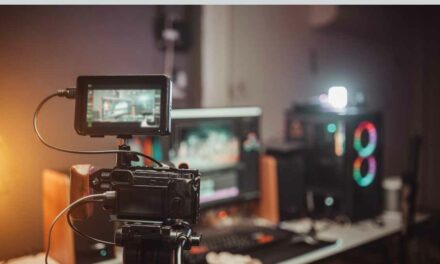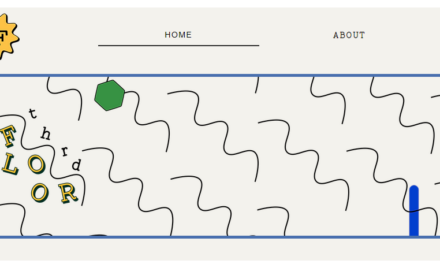
SEPTEMBER 3, 2021
full tilt
What to Know Before You Hit the Stream Button
If you think streaming is just for gaming and the young, think again.
Livestreaming is expanding as the preferred method for content creators of all ages and in many topical areas.
Restream research shows 54% of streaming covers gaming and esports, while music/sports/entertainment make up 17%, followed by professional content (9%), and IRL/everyday life (6%).
In the past year, livestreaming viewership has grown exponentially – increasing an average 49% in 2021 compared to 2020, according to Stream Hatchet. A survey by livestream and New York Magazine that asked about brand livestreaming found 80% of adults preferred to watch live video than to read a blog. Sixty-seven percent of viewers said quality is the most important factor for watching a livestream.
With all that growth in topics and viewership, it makes sense for content entrepreneurs to evaluate streaming opportunities. It could be a less crowded marketplace for your content, and your audience is likely to be on those platforms (or joining them soon).
Tilt Advice
Be reassured, there is no need to spend thousands of dollars to have a good setup, but some basics need to be nailed down to grant a neat experience for your viewers.
Here are a few of the best practices from the most-watched streamers on the planet to help you to build the most attractive stream.
When Twitcher GothamChess (486K) started only two years ago, he just bought a microphone. To give the best listening experience, you should make the sound mix perfect for your audience so they won’t have to tweak their speakers at every step of your stream.
The embedded microphone in your laptop is not an ideal experience for listeners. The captured sound is cavernous and distant. Though it might be adequate as a short-term solution, you should quickly shift to a dedicated microphone.
The average solution would be a headset microphone. Is it durable and comfortable? What sound features and aesthetics suit you and your content brand? Remember you will wear this headset for hours. Comfort is always a prior criterion.
The top-notch solution is a dedicated microphone. To ensure a good audio experience, you should always get your microphone mounted on an arm. It will prevent any accidental movement, which could generate muffled noises. The distance between your mouth and the microphone should be no more than 10 inches.
Voice is the key but seeing the face of the talking person is more crucial. Even Twitcher Dakotaz, who only streamed his unique voice for five years, eventually did a face reveal. As usual, money can dictate quality, but there are solutions out there to get you started without investing in a reflex camera.
Build your setup so you face natural light. To supplement this (or if you’re streaming after the sun sets), purchase ring or other studio-type lights, which start at around $20.
Forgo the green screen in favor of a background that can be a solid element in your storytelling. A picture on the wall, a light, or an item on a shelf that changes weekly can trigger your audience to ask questions.
An external camera is usually better than the one built into your computer. Look for one that captures at 720p minimum and 60 fps (frame per second) to create a flawless image. They start at around $50.
The chat is the heart of your stream and the only place where your viewers are going to interact. Read and reply to messages in real time. Creating interactions will make your audience feel more connected and valued, and may lead them to become paid subscribers.
Finally, don’t think you’re done when you conclude the livestream. Distribute the recording to your other channels that need to be fed, like YouTube, Instagram, and Facebook.
– Nicolas Bykoff
To learn about free audio mixer software and more advice on chatting, read the longer story.
This Instagram Influencer Gets Real on Social Media About Content Creation
Entrepreneur: Quigley Goode
Biz: Officially Quigley, The Soulcial Media
Tilt: Encouraging fashion risk-taking
Primary Channel: Instagram (334K)
Other Channels: TikTok (143.3K), newsletter (45K)
Time to First Dollar: 1 year
Rev Streams: Sponsored content, online course, e-books, Amazon, brand partnerships (e.g., a bag collection for Nena & Co and a capsule collection for Amazon)
Our Favorite Actionable Advice:
- Build an email list: Though Quigley has large followings on Instagram and TikTok, she captures email addresses through her newsletter in part because if her social media accounts are hacked, she still can connect with her core audience.
- Be proactive: Quigley didn’t wait for brands to come to her, she went to them, researching their public relations team, pitching ideas, and more.
- Customize your rates: Basing your sponsored content rates on the number of followers isn’t necessarily the best way to go. Know your industry and work with professionals to figure out the numbers.
Some of the Story:
In 2011, Quigley Goode pursued a career in broadcast entertainment journalism. She moved to Los Angeles in hopes of becoming an on-air host and breaking into the music industry. While creating press materials for her music, she connected with photographers who did her photo shoots so they could add them to their portfolios.
Quigley posted her fashion-focused photos on Instagram to promote her music and grow her account. “I didn’t have any intention of monetizing social media. I didn’t have any intention of growing an audience. But as I was working with these photographers and collaborating with them, it slowly built.”
Ten years later, Quigley has 334K followers on Instagram and 143.3K on TikTok. She posts about fashion, family, and food with a focus on keepin’ it real.
In 2015, Quigley’s mom found an article about a blogger who made $500K in one year. That’s when Quigley realized she could turn her own blog into a business. At the time, she had about 10K followers on Instagram. She put her life on hold – including music and modeling – to throw everything into content creation.
“I took one year to go full force at pursuing this one avenue and teaching myself everything I could about starting a blog and how to monetize a blog. That’s when I started seeing bigger strides because I was able to really concentrate my energy in one spot,” Quigley says.
At the time, blogs and affiliate marketing were more lucrative. Now, the bulk of influencers’ income is coming directly from the brand and Instagram. Today, her blog is more a place where people can see major life updates and course offerings than a place to publish sponsored content with affiliate links.
At the beginning of her career, Quigley reached out to brands about creating content in exchange for money or travel expenses. “Very early on, I chased down the contact for American Eagle, and I was able to get a partnership,” she says, noting American Eagle sponsored a trip she pitched. “That was the first time where I was able to do what I really wanted to do, which was travel and make content.”
From there, she began researching and reaching out to brands’ PR representatives. “I knew that as a creator, I could facilitate the entire photo shoot from start to finish. I knew that I had enough experience with production, management, modeling, and styling that I could figure out how to accomplish a full photoshoot with just a team of two people,” Quigley says.
In 2018, she finally viewed her brand as an established business. “Once I started to view my blog not as something that I was doing for me but as something that I was doing as a service to help other women find their unique style and explore their relationships, I started to consider it as a business,” she says.
Now, brands reach out to her with their ideas and expectations. “Most brands that have larger budgets have their marketing strategy planned out for the entire year and know exactly what they want to do with it. So they generally will seek you out, but you never know when you knock on someone’s door, how you might fit into their budget, make the connection.”
In 2019, her team earned $500K in gross revenue.
– Bonnie Azoulay
All the Story: To learn more about how Quigley sets her rates, check out the longer story.
quick talk
Caught on … Twitter (#100Tweets)
“There’s no magic formula, framework, or growth hack that will just answer all your questions and create results.” – Jacob Miller
things to know
Money
-
Super subscribers: Creators on Twitter can add Super Follows as a new subscriber revenue stream. Pick monthly rate ($2.99, $4.99, or $9.99) to charge and publish unique content that only your subscribers will see. (Twitter)
Tilt Take: Have a plan before you launch. Deliver something unexpected or unique, not everyday tweets. Let your paying customers know what and when they can expect your content.
Audiences
-
No rush to pop: Trapital’s Dan Runcie developed the Outkast Edge theory: “It’s when an outsider takes longer to pop, but slowly grows a loyal audience and gains enough leverage to stay true to themselves when they reach the top. (Dan Runcie)
Tilt Take: Dan’s thinking is smart. Viral success shouldn’t be the goal for a content entrepreneur. It should be a sustainable, long-term business.
Tech and Tools
-
Don’t tell stories: LinkedIn has given up on its video stories feature introduced last year. It says it’s working on a reimagined video experience for the platform, but LinkedIn Stories will be removed by the end of this month. (Social Media Today)
Tilt Take: Never put all your content eggs in another platform’s basket. You never know when they might take away the basket.
And Finally
-
Goodbye and hello: Professional gamer TimTheTatman built an audience of 7M on Twitch. Now, he’s taking his talents to YouTube Gaming. He says the new deal means he won’t have to spend so much time on producing content and can spend more time with his young family. (Insider)
Tilt Take: Starting and growing a business requires you to think about more than the actual business. What kind of life do you want to live? Those answers will help you understand how to structure your business schedule.
we’re a stan for Charlie Chang
YouTuber Charlie Chang keeps his 437K subscribers engaged by uploading how-to videos on growing wealthy as an entrepreneur. At first, the financier viewed the channel as a fun side project to promote his work as a real estate agent. In April 2020, Charlie rebranded his content, steering clear of property topics to focus on personal finance and upped his frequency to daily posts.
After this change, he tells Business Insider, he had content that ranked in search and grew the channel. Charlie earns revenue from affiliate marketing, assisting in the increase of signups or sales for a brand. He also advertises personal finance apps and business programs. Insider reports he earned $60K in the first quarter of this year.
Why we’re a Stan: Charlie wasn’t afraid to redirect his original vision. He found a topic that resonated better with search engines and his growing audience rewards him by using his affiliate links.
– Shameyka McCalman
the business of content
In this week’s Content Inc. podcast, Joe talks about how all content entrepreneurs need to start with an MVA, a minimum viable audience, before they launch products or diversify. Listen in to see how to get started.
In the latest This Old Marketing podcast episode, the boys discuss how the world of content creation is changing fast. Intuit buying Mailchimp will lead to more financial/content integration. New Web3 models will lead to audience ownership. Get ready.
the tilt team
Your team for this issue: Joe Pulizzi, Ann Gynn, Laura Kozak, Marc Maxhimer, and Dave Anthony, with an assist from Nicolas Bykoff, Bonnie Azoulay, and Shameyka McCalman.
Get more of the Full Tilt stories on TheTilt.com.
Know a content creator who’s going full tilt? DM us or email [email protected]
Was this email forwarded to you? Get your own sub here.
Copyright ©2021 Tilt Media LLC All rights reserved.
Unsubscribe | Update your profile | 17040 Amber Drive, Cleveland, OH 44111





